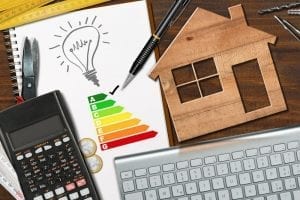If you are reading this, chances are you are thinking of replacing your boiler in the near future. With so much information available online these days. It’s quite easy to get new boiler quotes from the comfort of your own home. But what does it all mean?
Whether you’re actively looking for a new boiler? Or just in the research stage, or even trying to compare your current boiler to something newer. The facts and figures contained within boiler specs are important. This is because they can help you work out the most cost-effective. And the most energy-efficient solution you can to heat your home and hot water. Below we will try and debunk some of the Jargon.
Main Boiler Types
The three main types of boiler in the Uk boiler market all work a little differently to each other. Whether you are looking at a combi boiler, system boiler or a conventional boiler. The information provided in the boiler specs will differ slightly.
Here, we’ll cover some of the key technical specs and what they mean. We’ll look at:
Carbon monoxide emissions
Boiler efficiency
Boiler power
Gas and water pressure
Water flow rate
Carbon monoxide emissions
The safety of your boiler goes without saying, it’s not something you look for. Its something you expect. All gas boilers emit carbon monoxide during normal working operation. This on its own is nothing to worry about as this harmful gas is guided out of your home via the flue pipe.
The Carbon emissions will be listed in the boiler specs, the lower this figure the better. This is because should the boiler malfunction or a flue or vent become blocked. Less carbon monoxide will be released into the home. You’ll find carbon monoxide emissions included in the specifications of any boiler.
To minimise the risk of carbon emissions in your home, you need to keep your boiler serviced regularly.
Boiler efficiency
All boilers come with an ERP rating (energy products rating). It’s a standardised system to help consumers understand efficiency and compare products. All boilers sold now must have an ERP rating of ‘A’
Boiler power
The power of your boiler is a key specification you need to be aware of. This will usually be shown in kilowatts (kW). The kW rating determines how much hot water and heating can be supplied to your home. The more powerful a boiler, the more amount of heat it will be able to provide to heat radiators and hot water.
How do you know how powerful your new boiler needs to be? This is best done by looking at a number of factors. Including the size of your home and the level of insulation. Plus the number of occupants and the required hot water consumption.
Two points to note about boiler power are ‘input’ and ‘output’. Both will be stated in the boiler specs and both are measured in kW. Depending on the boiler type can refer to either Just your central heating or to both heating and hot water.
Input
This is how much energy your boiler can consume to heat your home and hot water. And it’ll be reflected in your energy bill.
Output
This is the amount of energy that the boiler can actually put into heating your home and hot water. This number will always be lower than the input because of wastage.
Pressure
With boilers, once you get a little bit deeper into the technical data. You will find figures related to pressure. These figures can be referring to either gas, water or oil pressure. And both will have an important role in the healthy operation of your boiler.
Gas pressure
The minimum inlet pressure is the lowest pressure required. For the gas to be arriving into your boiler. Each manufacturer will have different figures for this. Essentially they can’t guarantee the safe operation of your boiler with pressures below those stated in the specs.
Water pressure
You will also come across minimum and maximum ranges of pressure for the water in your system and boiler. These measurements help you and our enf=gineers keep an eye on pressure levels
Water Flow Rate
Another key measurement, specific to combi boilers, and arguably the most important. Is the water flow rate through your taps. This figure essentially this determines how much hot water your boiler can send to your taps or showers.
This figure is measured in litres per minute and is something you will have heard us speak a lot about. This is probably our key factor when deciding the best size combi boiler for your home.
If you have an incoming flow rate of 11 l/min then a 24kW combi will do the job just fine. If you have 20 l/min, there are combi boilers out there that can provide that in hot water. But always remember that two or more outlets being drawn off at the same time will see a reduction in pressure and flow rates.
Click here to read our guide to buying a new boiler or here to download our free Ebook


